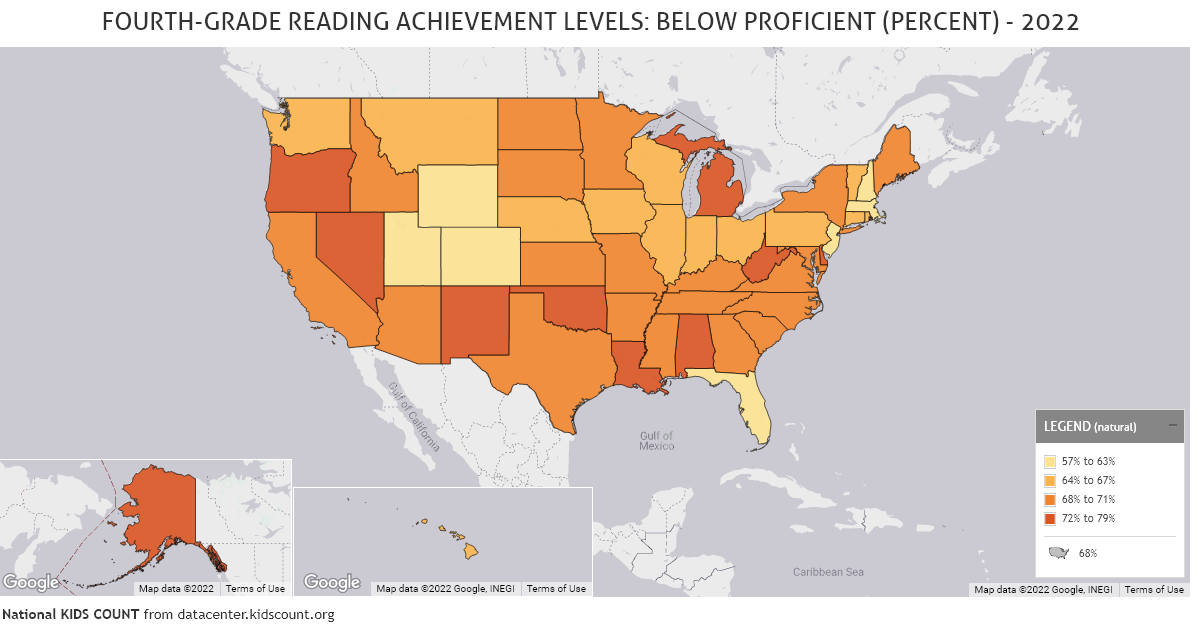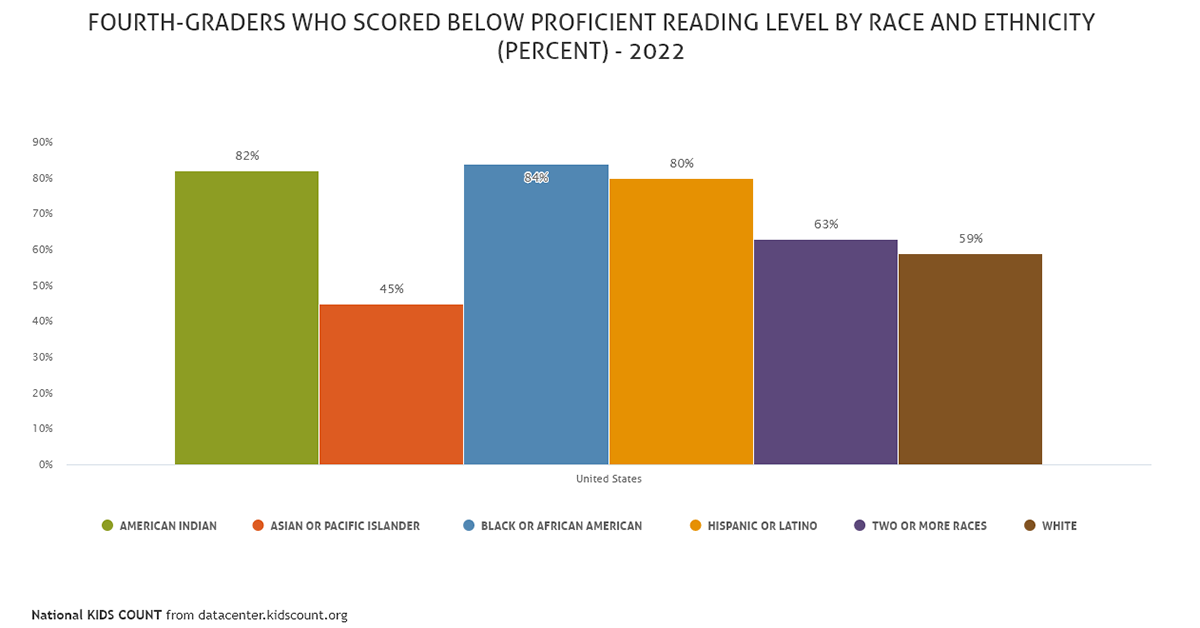Since Pandemic's Start, 42 States See Rise in Fourth-Graders Below Reading Proficiency

In the first data release from the National Assessment of Educational Progress since the COVID-19 pandemic began, 2022 findings reveal that more than two-thirds (68%) of U.S. fourth-graders are not proficient in reading, up from 66% in 2019.
Learning losses are even more pronounced at the state level. From 2019 to 2022, 42 states and Washington, D.C., saw increases in the share of fourth-graders scoring below proficient in reading, with 29 states seeing jumps greater than two percentage points. Delaware and West Virginia experienced the largest spikes of eight percentage points, reaching an alarming 75% and 78% of students unable to read proficiently, respectively. States’ figures currently span 57% in Massachusetts to 79% in New Mexico. Look up the percentage in your state.

Fourth-Grade Reading Matters
Children who reach fourth grade without being able to read proficiently are more likely to drop out of high school, reducing their earnings potential and chances for success. Kids with poor reading skills are also more likely to engage in high-risk behavior during adolescence. This issue is a national priority, as the U.S. government has set a public health objective to improve fourth-grade reading proficiency by 2030.
Fourth grade marks a critical transition period when children begin switching from learning to read to reading to learn other subjects in school. However, when kids enter fourth grade without basic reading skills, they often have a difficult time catching up and fall further behind across subjects.
Children who have fewer early learning opportunities, such as early childhood education, tend to enter kindergarten at a disadvantage and stay behind in subsequent grades. This, and access to other resources, contributes to significant disparities in fourth-grade reading skills by socioeconomic status and race/ethnicity.
Reading Proficiency Findings by Race and Ethnicity
The KIDS COUNT® Data Center also provides a measure of fourth-graders scoring below proficient in reading by race and ethnicity. New data show:
- Between 2019 and 2022, the percentage of fourth-graders below proficient in reading increased by two or three percentage points for all racial and ethnic groups except Asian or Pacific Islander students, who held steady at 45%.
- In 2022, at least 8 in 10 Black (84%), American Indian (82%) and Latino (80%) fourth-graders were not proficient in reading, followed by about 6 in 10 fourth-graders who identified as two or more races and white students (63% and 59%, respectively).
- These racial and ethnic disparities have widened since 2005 when the KIDS COUNT Data Center began tracking this measure.

These and other education data, along with findings in the 2022 KIDS COUNT Data Book, indicate that our nation is not providing American Indian, Black and Latino children with the opportunities and support they need to thrive academically and in other areas of life.
Access more resources on education and racial equity and inclusion from the Annie E. Casey Foundation.
Sign up for our newsletters to get the latest data, reports and resources





